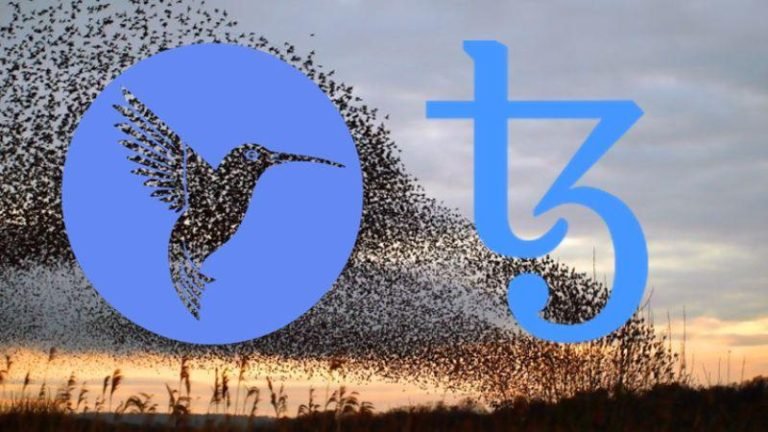United States, March 4, 2021 /AlexaBlockchain/ – Hover Labs has increased the debt ceiling on the Kolibri platform twice in two days to keep up with the unexpected demand surge for kUSD.
Hover Labs, Kolibri & The Debt Ceiling
Algorithmic stablecoin Kolibri (kUSD) has increased its debt ceiling for the second time in two days due to unexpected high demand. The debt ceiling is basically the max supply of kUSD. Initially the debt ceiling was set at $500,000 kUSD. This monday, that was increased to $750,000 kUSD.
With this week’s amazing growth, we are raising the debt ceiling in #Kolibri in order to prepare for more demand from exchanges as they spin up in the coming weeks.
— Hover Labs (@HoverEng) March 1, 2021
This unanimously signed proposal will change the ceiling from 500k to 750k $kUSD.https://t.co/K85aNML9No
One day later, the debt ceiling was increased again, this time to $1.5M kUSD. At this time of writing, that was clearly a good decision, since the current kUSD supply at the moment of writing sits at $884,890 kUSD. So, way over the ceiling of last Monday. Currently, there is over 1.2 million XTZ placed in Kolibri vaults.
In order to maintain stability, we’ve injected a proposal to increase the current debt ceiling (750,000 kUSD) to 1.5M kUSD which will help prevent a supply crunch where there’s a scarcity of kUSD, which may drive the price up and destabilize the peg. https://t.co/eOqmiXCjKy
— Hover Labs (@HoverEng) March 2, 2021
One reason for the high demand
The stability fee is lower than the interest you earn on the collateral. Let’s break this down:
You can mint (create) kUSD by setting up a Kolibri vault and deposit XTZ as collateral. After you have placed your collateral in the vault, you can mint kUSD. The collateral ratio needs to be at least 1:2. So, for every kUSD, you need to have at least $2 in XTZ value in your vault. Once you have minted kUSD, you pay a stability fee of 2% per year over that kUSD.
Now, remember you have XTZ put up as collateral. Since XTZ is the native coin of Tezos, and Tezos is a Proof of Stake (PoS) cryptocurrency, you can earn staking rewards with your XTZ. In the Tezos blockchain, you can delegate your XTZ to a Baker (network validator), while you stay in full control and possession of your XTZ.
This way you can simply earn staking rewards, without the need to lock up your XTZ for any period. This opens the road to immense possibilities for smart contract developers.
Kolibri taps into these possibilities: the XTZ that you put up as collateral for your kUSD, can be delegated to a baker and start earning staking rewards.
This is about 6% per year on your delegated XTZ. (If you’re new to Tezos and this sounds complicated: it’s not. It can be done within a few clicks. And with the same ease, you can undelegate at any time.)
So now we have a stability fee of 2% that you need to pay, and staking rewards of 6% that you earn. You still net 4% (not taking into account inflation).
Atomex
Last week Atomex made kUSD available for atomic swaps. XTZ – kUSD immediately became the most popular pair for kUSD users. It allowed users to go long on XTZ in a fully decentralized way, while making an extra interest through extra staking rewards.
As we saw above, minting kUSD will net you a 4% interest over your XTZ. But when people mint kUSD and use that to buy more XTZ, they can delegate that and earn another 6% on that value in XTZ.
Quick example: you have a vault with a safe margin of XTZ. Let’s say 1,000 XTZ (currently worth around $4,000). Now you mint $800 kUSD. With that kUSD, you buy 200 XTZ on Atomex. Now, you delegate that 200 XTZ and earn 6% interest in XTZ. So now you earn 6% on your collateral, you pay 2% on the minted kUSD, but you earn another 6% on the newly acquired XTZ.
You earn a total of 12% in XTZ and pay 2% in kUSD, netting 10%. (If the value of XTZ stays the same. Remember that these types of constructions are high risk due to the highly volatile nature of cryptocurrency value.)
Dexter Exchange
Yesterday the Tezos-based Decentralized Exchange, “Dexter” added support for kUSD. Besides the opportunity to buy more XTZ with freshly minted kUSD, users can now also add liquidity to liquidity pools on Dexter. In liquidity pools, liquidity providers can earn a percentage of the fees that traders pay, while they make trades on Dexter.
If you want to add liquidity for a trading pair on Dexter, you add 50-50 value for both sides of the pair. So, if we look at the XTZ – kUSD trading pair, you would need to add $50 in dollar value in XTZ for every $50 kUSD.
An interesting part about adding liquidity in XTZ on Dexter is this: you can delegate your XTZ, while it is stalled in a liquidity pair. So again, we see that the Tezos design allows developers to implement delegation of XTZ into Tezos’ DeFi. And with kUSD, you can earn interest on both sides of the pair.
Be careful and make sure you fully understand what liquidation means:
It’s very important to understand: once your collateral ratio drops below 1:2, your collateral can be liquidated. This means that you can lose your XTZ. As soon as your collateral ratio drops below the 1:2 ratio, someone can pay your debt and he will receive your collateral (getting XTZ at a big discount).
A quick example: if you have 100 XTZ in your vault, while XTZ is worth $4, then you have $400 worth of XTZ. With a collateral ratio of 1:2, you can now have max $200 kUSD. But as soon as the value of XTZ drops, your 100 XTZ will be worth less than the needed $400 value in your vault.
Now, your 100 XTZ can be liquidated. This means that someone can pay the $200 kUSD and he will receive your 100 XTZ. So always keep a healthy margin when considering your collateralization utilization to be able to deal with the high volatility in crypto.
More info about Kolibri and how to mint kUSD here.
The constructions mentioned in this article are high risk and this article should by no means be regarded as any form of financial advice.
Disclaimer: Participating in DeFi systems and with DeFi Applications usually comes with high-risk. Extreme caution and thorough research must be undertaken by any user utilizing such systems, or applications. XTZNews does not endorse any DeFi applications mentioned in this article and has presented the news for public visibility only.
Source: XTZ News
View source version on xtz.news
News URL: https://xtz.news/latest-tezos-news/hover-labs-increases-debt-ceiling-for-kolibri-twice-in-two-days/



